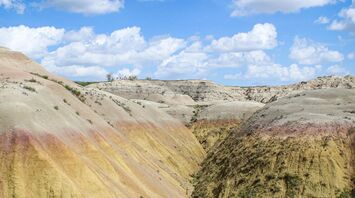Exploring Ocmulgee Mounds National Historical Park: A Journey Through Time and Culture

Tucked away in the heart of Georgia, Ocmulgee Mounds National Historical Park stands as a profound reminder of the deep history and cultural significance of North America’s Indigenous peoples. For over 17,000 years, the area surrounding the Ocmulgee River has been a continuous home to various communities, leaving behind traces of their existence that still inspire awe today. The park, located near Macon, Georgia, offers a rare opportunity to connect with the ancient past, allowing visitors to explore the earthworks and artifacts left by the Mississippian culture and their predecessors.
A Glimpse Into Ancient Civilizations
The Ocmulgee Mounds are best known for their association with the Mississippian culture, which thrived here between 900 and 1100 CE. The civilization was highly advanced for its time, leaving behind large, complex earthen mounds that served both ceremonial and practical purposes. These mounds, some reaching over 50 feet high, were built using intricate methods and required significant labor. Today, the Great Temple Mound, one of the park's key features, still looms over the landscape, offering panoramic views of the surrounding area.
But the history of Ocmulgee stretches far beyond the Mississippians. Archaeological evidence reveals that people have lived in the area for thousands of years, dating back to the Paleo-Indian period. These early inhabitants hunted mammoths and other megafauna, shaping the landscape long before the construction of the monumental mounds. Over millennia, the land continued to be home to Woodland and Archaic cultures, each leaving their distinct mark on the region.
The park’s museum showcases artifacts from these various periods, including pottery, tools, and ceremonial objects, providing visitors with a tangible link to the people who once walked these lands. The exhibits paint a vivid picture of the cultural and social evolution that took place here, culminating in the sophisticated society of the Mississippians.
The Mounds as Sacred Spaces
The mounds themselves are not just historical landmarks; they are sacred sites that hold deep spiritual meaning. The Mississippian people used the mounds for a variety of purposes, from religious ceremonies to political gatherings. The Earth Lodge, one of the most well-preserved structures at Ocmulgee, gives visitors a rare chance to step inside a reconstructed ceremonial space. Walking into the Earth Lodge, you are immediately struck by the circular arrangement of seats around a central hearth, a design that reflects the social and spiritual hierarchy of the Mississippian world.
For many Indigenous communities, these mounds remain a powerful symbol of their ancestral connection to the land. Tribes such as the Muscogee (Creek) Nation, descendants of the Mississippians, consider Ocmulgee a sacred place. In fact, efforts are currently underway to expand the park and designate it as a national park, in recognition of its importance not only as a historical site but as a living cultural landscape.
Walking the Trails of History
Visitors to Ocmulgee Mounds National Historical Park can experience the history and natural beauty of the area through a network of walking trails. These paths wind through the park’s forests and wetlands, offering glimpses of wildlife and scenic views of the mounds. The trails also take visitors past significant archaeological sites, such as the Funeral Mound, where burials and ceremonial offerings were made, and the Lesser Temple Mound, another important spiritual site.
One of the highlights for many visitors is the chance to walk the same paths that Indigenous peoples traversed centuries ago. The River Trail, for instance, follows the banks of the Ocmulgee River, where Native communities fished, gathered plants, and transported goods along ancient trade routes. These natural and cultural landscapes are inextricably linked, providing a fuller understanding of how people lived in harmony with their environment for thousands of years.
Preserving Indigenous Heritage
In recent years, Ocmulgee Mounds has become a focal point for the preservation of Indigenous heritage. The Muscogee (Creek) Nation, forcibly removed from the region in the 19th century, remains deeply connected to Ocmulgee and has been instrumental in efforts to expand the park and protect its sacred sites. This ongoing collaboration between the federal government and the Muscogee (Creek) Nation represents a significant step toward honoring and preserving the cultural legacy of the region’s original inhabitants.
Plans are also underway to extend the park’s boundaries, which would allow for the protection of additional mounds and burial sites that lie outside the current park limits. This initiative would not only safeguard these important sites from development but would also ensure that future generations can continue to learn from and appreciate the history embedded in this landscape.
A Living Landscape
What makes Ocmulgee Mounds National Historical Park so unique is that it is not just a place to observe the past but a living, breathing landscape that continues to hold meaning for modern Indigenous communities. Annual events such as the Ocmulgee Indian Celebration bring together Native peoples from across the country to share their culture, traditions, and history with visitors. The festival features traditional dance, music, and crafts, offering a dynamic way to experience the richness of Native American heritage in a contemporary context.
For travelers interested in exploring beyond the typical historical attractions, Ocmulgee Mounds offers an immersive experience that combines natural beauty, ancient history, and vibrant living culture. The park serves as a bridge between past and present, showing how the legacy of the Mississippians and their ancestors continues to shape the identity of the region.



















